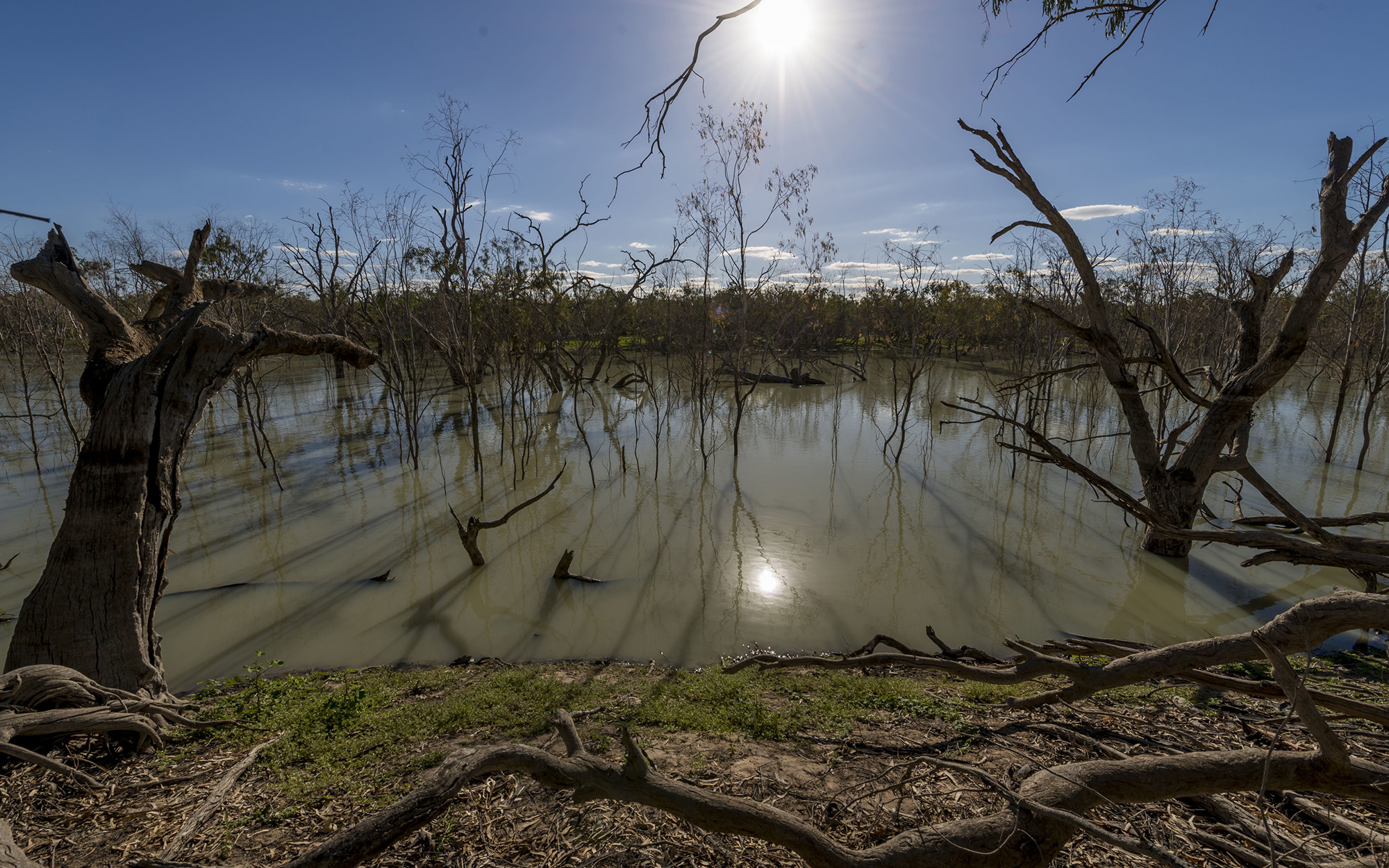Impacts and benefits of higher releases
Rain events in southern Queensland and northern NSW, starting in late 2021 and continuing until late 2022, led to significant inflows to the Menindee Lakes system. WaterNSW managed the volume of water stored in the Menindee Lakes system by pre-releasing water to accommodate inflows, avoiding releases over 18,000 megalitres per day (ML/day) which resulted in overbank flows during the January-February 2022 period.
The inflows highlighted the unknown risk to properties and roads within the Menindee township when releases increase above 18,000 megalitres per day (ML/day) as measured at Weir 32. It also highlighted the unknown potential benefits to sections of the Lower Darling-Baaka floodplain that miss out on environmental watering events, even when there is flooding upstream of the Menindee Lakes.
To address the unknown impacts on Menindee town and potential environmental benefits to the Lower Darling-Baaka River and Great Darling Anabranch from higher releases, two studies were completed by Manly Hydraulics Laboratory. The findings from the two studies will inform how flood mitigation and air space operations can deliver multiple outcomes for the Menindee community, Lower Darling River and downstream.
Study 1 – Menindee Flow Release Impact Assessment
Manly Hydraulics Laboratory modelled and assessed the impacts of releases between 18,000 ML/day and 25,000 ML/day, as measured at Weir 32, to understand inundation risks to properties and roads within Menindee township. Full details are available below.
Download the Menindee Flow Release Impact Assessment (PDF. 26,373KB)Study 2 – Lower Darling River and Great Darling Anabranch Vegetation Inundation Mapping study
NSW and Commonwealth governments partnered to map the extent of vegetation communities inundated by releases between 18,000 and 30,000 ML/day as measured at Weir 32. The study covered the Lower Darling-Baaka River between Lake Wetherell and Wentworth, including the Great Darling Anabranch.
The study found that, relative to releases of 18,000 ML/day, a 25,000 ML/day release triples the total area of floodplain vegetation inundated, while a 30,000 ML/day release quadruples the area of floodplain vegetation inundated, noting the sharper increase in inundation extent at 25,000 ML/day occurs due to the initiation of Lake Cawndilla releases. Full details are available below.
Download the Lower Darling River and Great Darling Anabranch Vegetation Inundation Mapping (PDF. 35,600KB)Assistance
If you require assistance reading these documents, please contact 1300 081 047 or water.enquiries@dpie.nsw.gov.au
Frequently asked questions
Do the studies mean NSW will target higher releases from the Menindee Lakes?
The results of both studies should not be interpreted as immediate plans for higher releases from Menindee Lakes. The two studies aimed to inform community discussions about options to mitigate third-party impacts to properties and roads from higher releases.
Wouldn’t higher releases quickly drain the Menindee Lakes and impact drought reserves?
If third-party impacts are addressed in Menindee township, future releases above 18,000 ML/day would only occur for operational purposes during flood events, like those used recently to manage inflows and ensure the lakes are full once the flood event has passed.
Environmental water deliveries are limited by environmental water entitlements, so environmental water could only be released on top of higher operational releases to increase inundation of specific floodplain vegetation communities.
Has NSW considered impacts and benefits to private landholders along the floodplains?
Higher releases could inundate private land, which could benefit agricultural practices such as cropping or grazing. Any inundation of private land would require extensive consultation with landholders prior to higher releases occurring.
